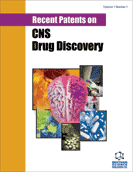Abstract
With the advances in antiretroviral (ARV) therapy, patients with Human Immunodeficiency Virus (HIV) infection are living longer, however, some patients encounter co- morbidities which sometimes require treatment. Therefore, during the treatment with ARV drugs these patients could take several recreational drugs (e.g. amphetamines, hallucinogenes, opiates, or alcohol) with a possible development of drug-drug interactions (DDIs). In particular, Nucleoside/nucleotide reverse transcriptase inhibitors (NRTIs/NtRTIs) are mainly excreted through the kidney and are not substrates of the cytochrome P450 or P-glycoprotein, therefore the DDIs during this treatment are minimal. In contrast, the other ARV drugs (i.e. non-nucleoside reversetranscriptase inhibitors, Protease inhibitors, Integrase inhibitors, chemokine receptor 5 antagonists and HIV-fusion inhibitors) are an important class of antiretroviral medications that are frequent components of HAART regimens but show several DDIs related to interaction with the cytochrome P450 or P-glycoprotein. In this paper we will review data concerning the possibility of DDI in HIV patients treated with ARV and taking recreational drugs.
Keywords: Adverse drug reactions, antiretroviral therapy, clinical failure, drug-drug interactions, recreational drugs.
 37
37





















